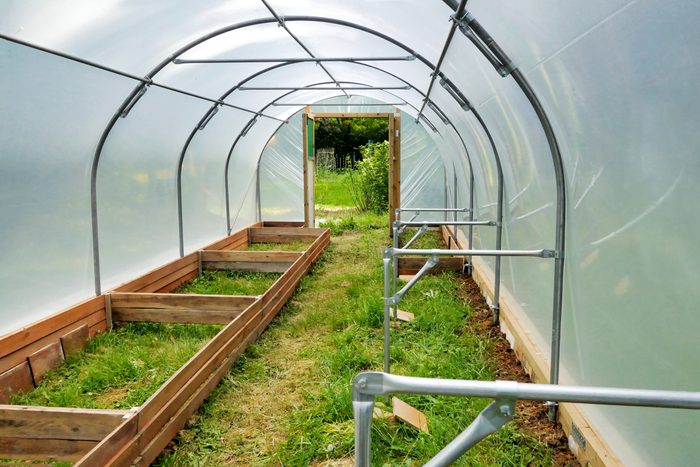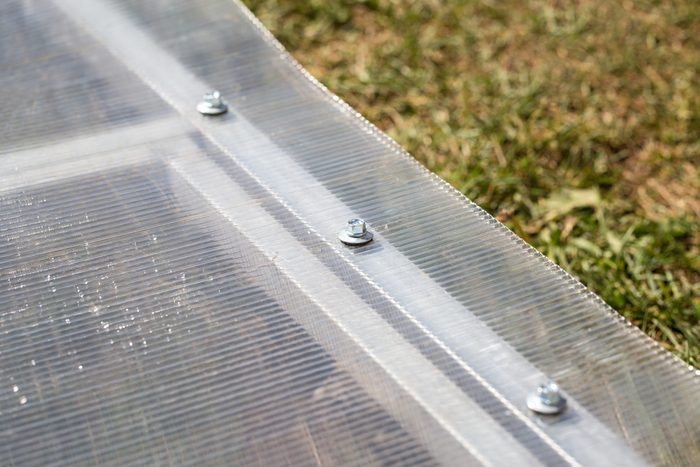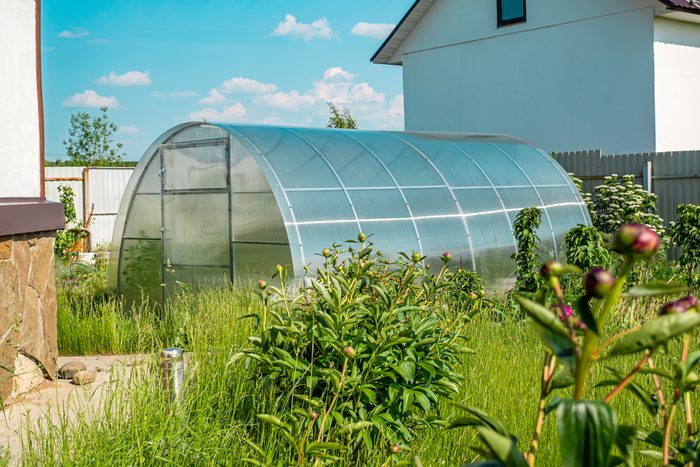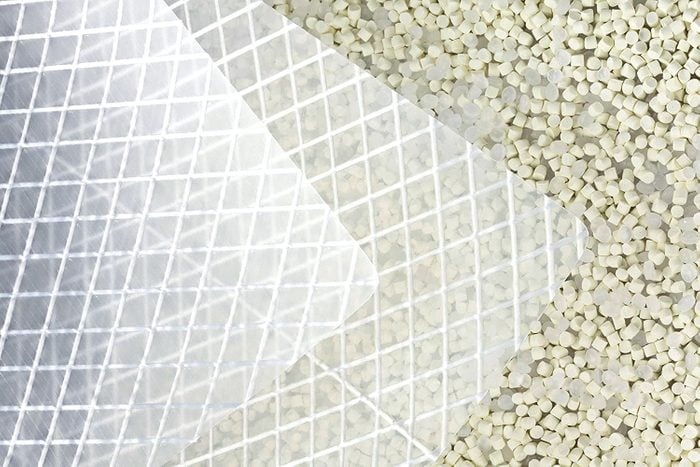Greenhouses covered with glass can be beautiful. But for the DIY gardener, greenhouse plastic is a more practical option.
Our editors and experts handpick every product we feature. We may earn a commission from your purchases.Learn more.
Greenhouses covered with glass can be beautiful. But for the DIY gardener, greenhouse plastic is a more practical option.
Our editors and experts handpick every product we feature. We may earn a commission from your purchases.Learn more.

This is the most common plastic used for greenhouses. It’s thin (6- to 12-mil), durable and the least expensive of the four greenhouse plastics. A single layer of polyethylene works well, but a double layer is ideal.
“Blowing air between layers creates an air pocket that acts as insulation,” says DeVore. “With a double layer, there’s a lot more efficiency in trapping sunlight and heat.” Also, more condensation occurs with a single layer of plastic than a double layer.
Polyethylene can only cover wood or metal frames. “It destroys a PVC (polyvinyl chloride) frame, so if you must use PVC under polyethylene, brush a protective layer of paint over the PVC,” DeVore says.

This common plastic is more expensive than polyethylene. “There is better light transmission with polycarbonate than polyethylene, so this is a consideration if you worry you will not get enough natural sunlight in your greenhouse,” says DeVore.
Because polycarbonate is rigid, it’s used for end walls and to create rooms in a greenhouse. “Polycarbonate lasts 10 years or so versus two to seven years for polyethylene,” says DeVore. The drawback? You can’t use it to cover domed or arched greenhouses.

This is the least common and most expensive of the greenhouse plastics. DeVore says it’s good for greenhouses in areas with high winds because it comes in firm corrugated panels. The milky white panels let in less light than other plastics, however.
Polyvinyl carbonate is typically used to diffuse light evenly and protect plants from excessive exposure to harmful rays. It’s bendable for curved roofs. The trick here is finding it. As of this writing, we couldn’t find an online source.

As expensive as polyvinyl carbonate, woven plastic film is reinforced polyethylene that can be double layered. It has reduced light transmission and is good for domes and arched roofs.
It resists tearing, which DeVore says is an issue with greenhouse plastics. “Wind and hail rip plastic, and small tears become big,” DeVore says. “The reinforcement in woven plastic film helps stop or minimize tearing.”